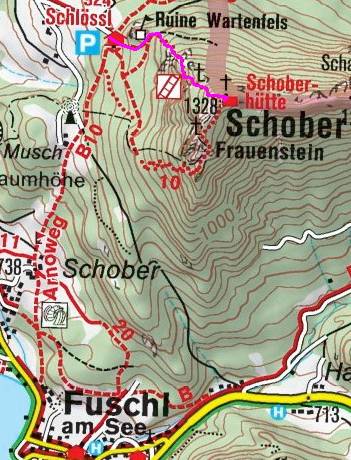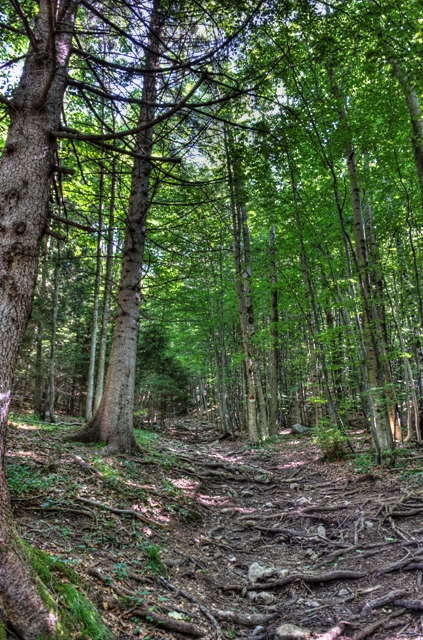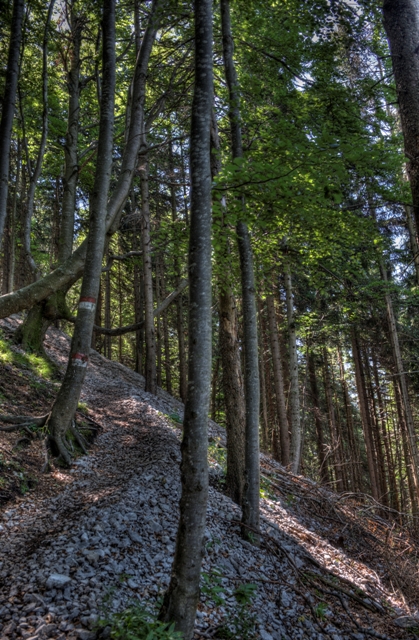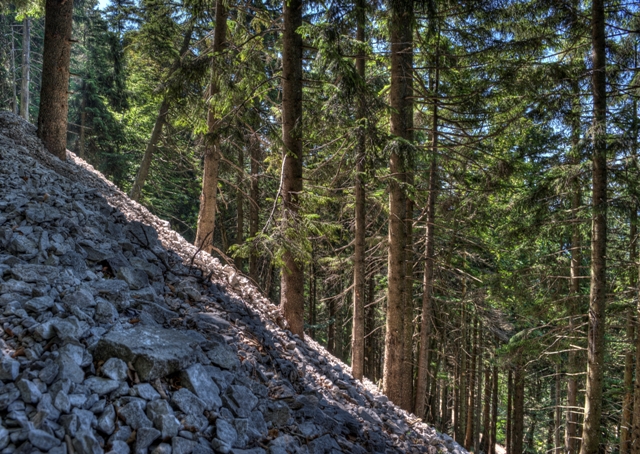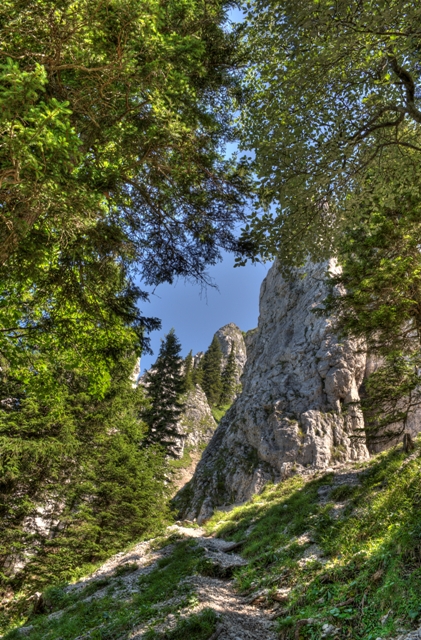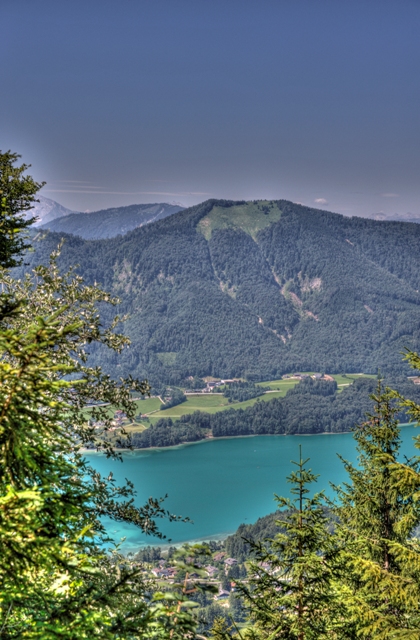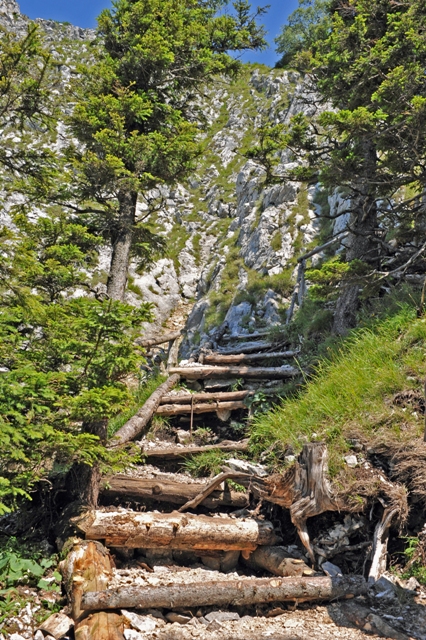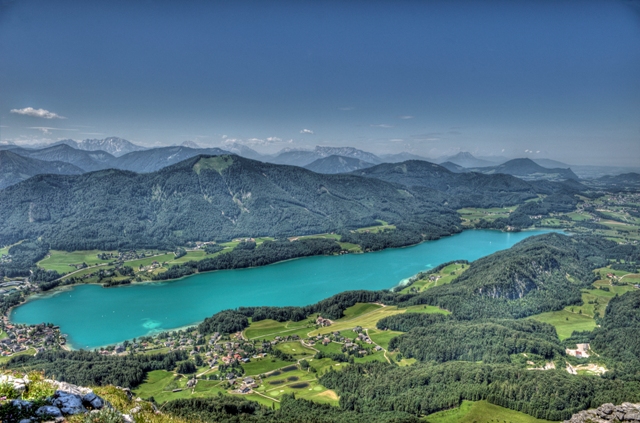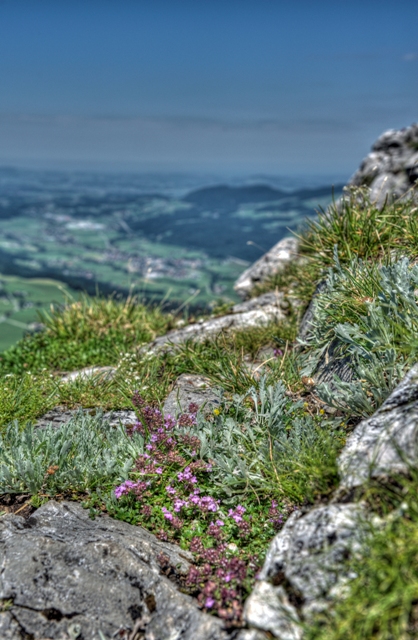We’ve enjoyed quite a variety of Austrian food, both here in Bavaria and on trips to Vienna. And, in southern Bavaria and northern Austria, there can be a bit of an overlap… kaiserschmarm, schnitzel…are they Bavarian or Austrian??? It quite depends on who you ask, and I’m not going to touch that controversial question!
But there are a few dishes we can all agree are classic Viennese. Wienerschnitzel, of course tops the list, as the name simply means “Vienna-style Schnitzel”. And there’s one you might not have heard of outside of the German-speaking world - Tafelspitz.
On a side note, Tafelspitz is one of those dishes that you would not order off of the English menu in Germany or Austria. The translation just sounds perfectly terrible, as unfortunately do many translations of German dishes. Tafelspitz will most likely be described on the English menu as “Boiled beef tritip” or “Boiled silverside of beef.” Not so appetizing a description, but you would really be missing out not to try it.
First, it’s basically a beef brisket cut, not some strange piece of animal…I use the tafelspitz cut to make brisket tacos and it's becoming a favorite cut. Second, while it is boiled, it is not rubbery and nasty. Quite the opposite…tafelspitz comes out like a perfect slow cooked piece of roast – flavorful and falls apart with the touch of a fork. You can see below how the meat would just crumble into shreds. Yum!

It’s also a dish that can be served both as the authentic, multi-course dinner – really more of an experience than just a meal – or as a simple, hearty homemade dinner. It all depends on how authentic you want to be and how much time you’re willing to invest.
We tried our hand at making Tafelspitz this weekend and it was quite a tasty surprise. Whenever I cook something like this (or brisket tacos, pork shoulder, or goulasch…) I’m always a bit afraid I’ll get a big rubbery hunk of meat rather than fine shreds. And usually I'm shocked (in a good way) with the results. I think my wonderful giant Le Crueset pot helps things out - I usually turn the stove down to the lowest level, cover it and leave it for hours to get perfect results.
There are various recipes out there, all with conflicting info. So we cobbled together our own simple home version from about 10 other recipes and made a few simplifications. We wanted tasty food, not hours in the kitchen.
So here’s how to make authentic Tafelspitz, as well as how to make a simpler version at home.
For the real deal, visit Plachutta in Vienna, and be sure to make a reservation. While it is one of those restaurants that all the guidebooks recommend, it’s one that is also authentic and loved by many residents as well. Don’t skip it just because it’s famous – it really is great food and worth a visit.
First, the Ingredients:

| Authentic (feeds 4-6) |
Simplified (serves 2) |
| 2 kg Tafelspitz (in 1 piece if possible) |
500g Tafelspitz |
| 750g beef bones (cut and with marrow) |
3L beef broth |
| 4-5 L water |
|
| 3 carrots |
3 small carrots |
| 1-2 parsnips |
1 parsnip |
| 2 large onions |
2 medium onions |
| few stalks flat parsley |
few stalks flat parsley |
| 2 leeks |
1 leek |
| 1 small celery root |
1/4 celery root (or small one) |
| 3 bay leaves |
2 bay leaves |
| 1 Tbsp black peppercorns |
16 black peppercorns |
| 2 juniper berries |
10 red peppercorns (optional) |
| chopped chives (decoration) |
|
In Germany, you'll find something wonderful in the produce section. It's called Suppengrün ("Soup Vegetables"), and is the bundle of veggies you need to make soup broth. So, it includes already for you, the main ingredients. And you don't have to buy a whole, huge celery root that you won't fully use.

Parsnips ("Pastinak" in German) were an ingredient I'd not used before. Interestingly, the ladies at the checkout counter were not familar with them either, so I explained that they were sort of like a huge white carrot. Which, OF COURSE, made us put them side by side to test out that unproven thought. From the cross section, they definitely look like a carrot relative. The taste is similar, though the parsnip has a more subtle carrot taste and a slightly spicy aroma. And they're a little harder to bite than a carrot. But the taste is very mild. Parsnips cooked will take on the flavor of whatever you are using to cook them.

Preparing Tafelspitz:
And now the preparation: Though it's a fairly simple dish to make, it needs 3-6 hours to actually cook.
| |
| Authentic (feeds 4-6) |
Simplified (serves 2) |
| Cut onions in half (do not peel) and fry cut side down until slightly blackened. |
| Fill pot with water |
Bring broth to a boil, add all ingredients except for carrots and parsnip (or any others you plan to eat) |
| Wash bones and meat, place in water |
| Add more water to cover meat if needed |
| Add peppercorns, bay leaves, and berries and bring to boil |
|
| Reduce to low, cover, and simmer 3-4 hours |
Reduce to low, cover, and simmer 2 hours |
| Periodically skim foam if it develops |
| Add remaining vegetables and cook 1-2 more hours covered until meat is soft |
At the end of the cooking, you'll have a pot looking like this:

While the tafelspitz is in the last stages of cooking, you'll want to make the sauce(s) and any sides you plan to serve.
Typical side dishes include potatoes (boiled, or a style similar to hash browns), creamed spinach, and vegetables. We opted for veggies from the soup and tried the potatoes. For the potatoes, you should boil and peel the potatoes in advance (the previousl day is best). Then grate them into shreds. Finely slice onions in oil until soft. Then add the grated potatoes, season with salt, and fry until crispy.
Unless you have a desire to be super authentic, I recommend you buy the preshredded potatoes. Here you can buy excellent readymade potato pancakes (Schlemmermeyer kiosks and stores have them here) or prepackaged Rosti (shredded, oiled, seasoned, and ready to cook). In the US, I would just get some of the frozen hash brown potatoes.
There are a variety of sauce recipes out there, but the two most common (and traditional) are the chive sauce and an apple-horseradish sauce. As I hate eggs and creamy sauces, you'll see the apple-horseradish one here. It's a really nice, light and subtle sauce. Probably it should be ground a little finer than we did, but still it will be more a salsa type of sauce than a creamy, smooth sauce.
| Chive Sauce |
Apple Horseradish Sauce ("Apfelkren") |
| 2 raw egg yolks |
1 Granny Smith apple, peeled & cored |
| 3 hardboiled egg yolks |
1/2 cup shredded fresh horseradish |
| 100g bread (remove crust) |
juice of 1 lemon |
| 200 mL milk |
cider vinegar, salt, sugar |
| 400 mL oil (not olive oil) |
|
| 2 Tbsp chopped chives |
Puree apple and mix with horseradish |
| |
Add lemon juice (to keep apple white) |
| Soak bread in milk |
Season with cider vinegar, salt, sugar to taste |
| Stir together all eggs |
|
| Season with salt, sugar, vinegar |
Gravy Sauce |
| Squeeze out milk from bread and add bread |
Fry diced onions in butter |
| Stir mixture while dripping oil into the mix |
Add a bit of flour, fry another minute |
| Stir in chives |
Add some broth from the beef |
| (or use blender, as you would make mayo) |
Bring to a boil and add grated horseradish |
After mixing together the ingredients for the apple-horseradish sauce, you'll end up with something like this.

Serving Tafelspitz:
And then comes the fun decision - how to serve your tafelspitz. Traditionally there are two main ways:
1) The entire pot (usually copper) is brought to the table and guests serve themselves out of the communal soup pot.
Here, you would remove meat from pot. Remove fat and slice meat against the grain. (Restaurants will do it very thinly, but it's tough to do at home without meat falling apart). Season soup and return the slices to the pot for serving.
2) Guests are served in separate courses, so you'll need to keep the meat warm and moist during the first courses.
In this case:
Remove meat from pot. Remove fat and slice meat against the grain. Keep meat warm in oven, making sure to cover with broth and foil to stay moist. Strain contents of pot to separate veggies and broth (use cheesecloth if needed to achieve a nice broth). Set aside veggies that you will serve (carrots, parsnip, possibly onion and leek - it's up to you). Season soup (it's optional to serve with veggies and/or thinly sliced noodles in the broth).
Tafelspitz Ettiquette:
Traditionally, Tafelspitz then is eaten in the following order:
Course 1: Soup
Serve soup, either clear broth, or with diced celery root and parsnip and/or noodles.
Course 2: Marrow
Very traditional - remove a bone from the soup pot. Scoop out the marrow and spread over toasted rye bread to eat.
Course 3: Meat
Arrange sliced meat on a deep plate or soup bowl. Pour some broth over it, season with sea salt, and decorate with chopped chives. Usually served with the cooked vegetables, accompanied by crispy potatoes, boiled potatoes, and/or creamy spinach. Serve with chive and/or apple-horseradish sauces.
While I think it's important to know the authentic way, it can be simplified easily into a really enjoyable hearty dinner. Since there was a nice small piece of Tafelspitz on sale yesterday, I decided to try an even simpler method -
This time I boiled 2.5L (around 9 cups) of beef broth, using the powdered version of broth. I added 1 onion cut in half (with skin on), around 450g (1 lb) piece of Tafelspitz, 1 bay leaf and a tablespoon of a mixture of ground szechuan and pink peppercorns. Then I turned the heat down to low, covered, and let cook for 3 or 4 hours. Again, it turned out perfectly, and with a very nice roast beef flavor. Next time I'll throw in some small potatoes from the beginning to cook and absorb the flavors. The entire process took about 10 minutes of active work, and made a great lunch plus leftovers!
 Friday, March 30, 2012 at 6:00
Friday, March 30, 2012 at 6:00 
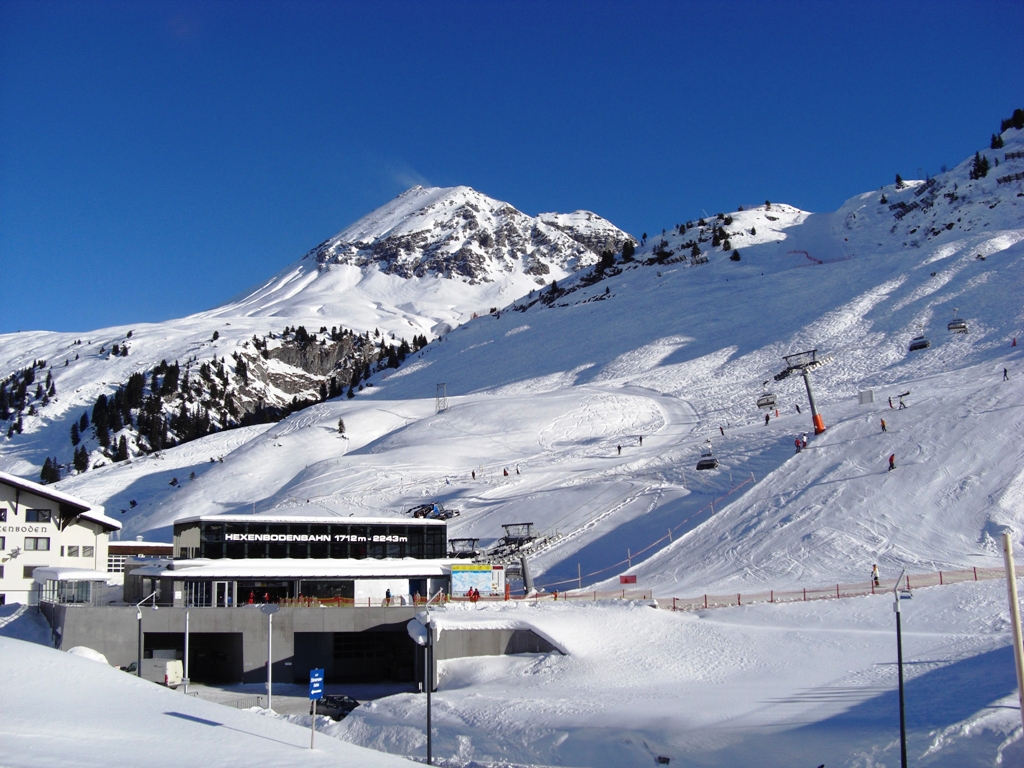
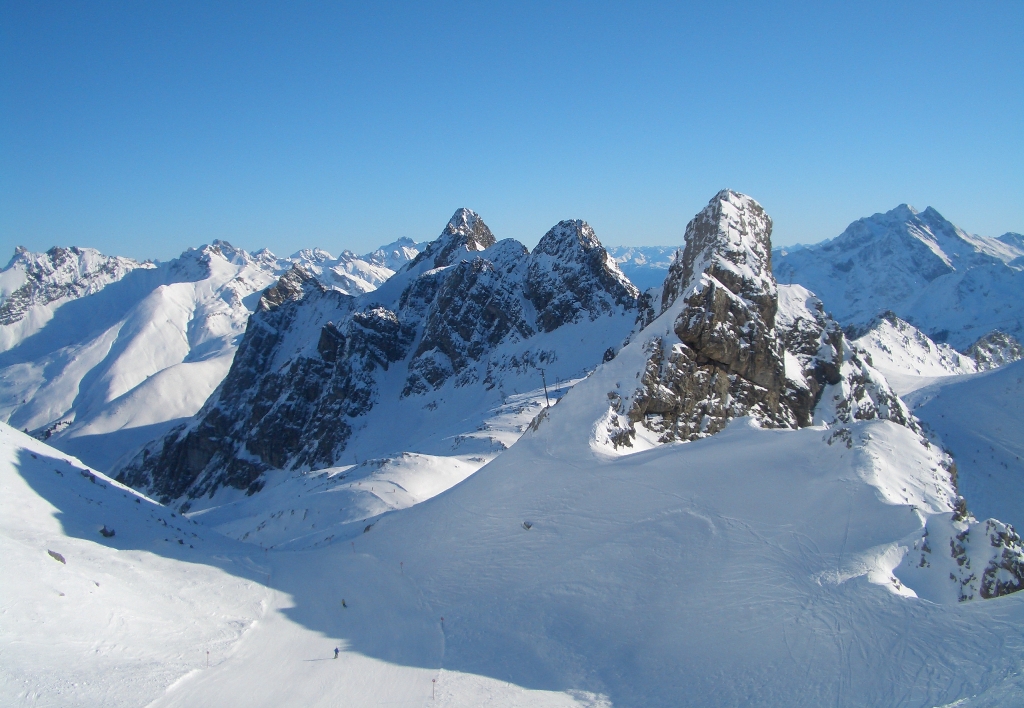
 Herr J ...
Herr J ...  2 Comments
2 Comments  Sports,
Sports,  Travel tagged
Travel tagged  Austria,
Austria,  St. Anton am Arlberg,
St. Anton am Arlberg,  ski trip,
ski trip,  skiing ...
skiing ...  Print Article
Print Article  Email Article
Email Article 










